
Dental Fillings
Dental filling are special materials that are inserted into a decayed or damaged tooth to halt the spread of decay or repair the damage.
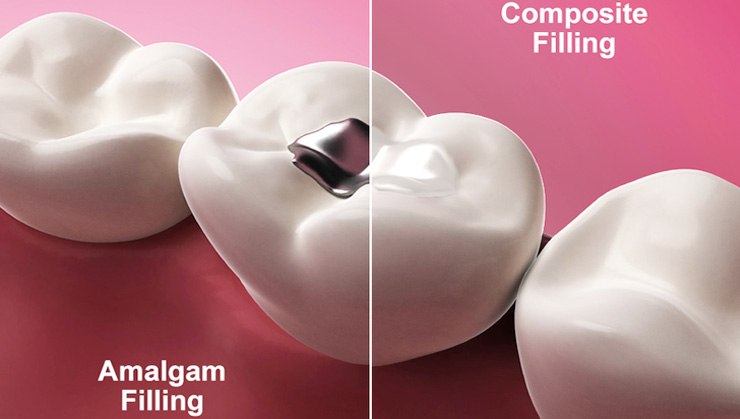
Silver Amalgam Fillings Vs
Composite White Fillings
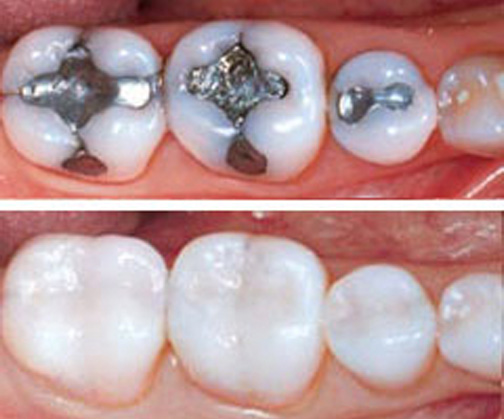
Silver Amalgam Fillings Vs
Composite White Fillings
How We Do It
At Sri Sai Kirupa Dental Clinic we choose to use a composite substance (made of acrylic resin and glass) rather than silver amalgam as the filling material due to the former’s several advantages over the latter. And, for patients who still have silver fillings from previous years, we can safely replace them with composite resin fillings or even with porcelain inlays and onlays.
More about Dental Fillings
Composite Resins Vs. Silver Fillings:
- Natural & Pleasing Appearance: White color of composite resin fillings can be made to match the tooth natural color. Also, they are unlike silver fillings which are conspicuously visible and not aesthetically pleasing
- Protection: Fluoride present in the resin helps prevent tooth decay
- Safety: Are unlike silver fillings which contain mercury that can corrode, leak and stain teeth and gums
- Strength: The resin forms a strong chemical bond with the tooth that strengthens it. Also, they are unlike silver fillings whose edges can wear down, weaken or break
- Sensitivity: Composite resins are a poor conductor of heat and cold and hence the teeth are not as sensitive to such sensory inputs as teeth restored with silver fillings

Dental Inlays & Onlays
Dental inlays and onlays are ideal when the damage/decay to a tooth is neither severe enough for a dental crown nor bad enough that a filling is not possible. While inlays help prevent further damage/decay to a tooth’s upper surface (enamel) inside the tooth cusps, onlays are needed if the tooth decay extends out to one or more of the cusps.
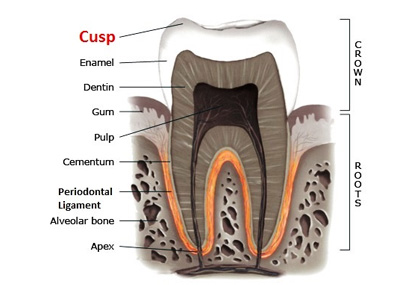
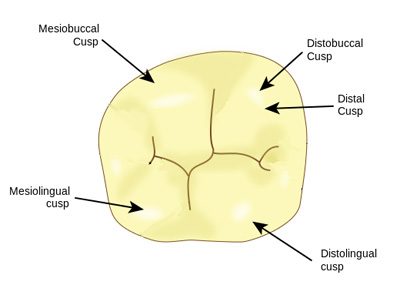
Although inlays and onlays can be made of gold or composite resin, using porcelain is more advantageous due to its strength and ability to match the tooth’s natural color.
Inlays and onlays are a good alternative to traditional fillings because they are both more aesthetic and strengthen weakened teeth. Whereas fillings can reduce a natural tooth’s strength by up to 50%, inlays and onlays actually raise the tooth’s strength by up to 75% as they are bonded directly onto the tooth using special high-strength resins. Consequently, they can last decades.

Dental Sealants
Dental fissure sealants are another preventive and completely painless measure for adults and children.
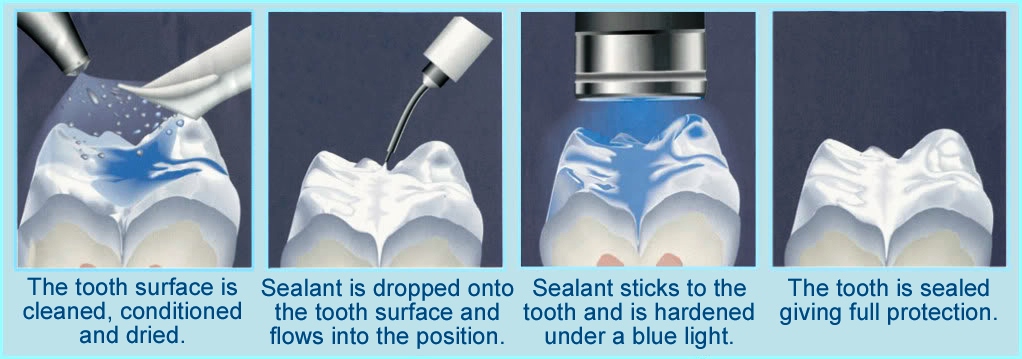
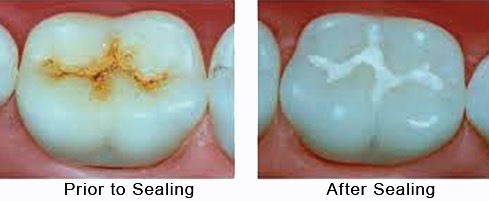
The sealant is a plastic filling that is applied into the fissures (or grooves) of the chewing surfaces of teeth, especially of the back teeth such as premolars and molars. These fissures can be extremely narrow, deep, and difficult to clean with a toothbrush and hence prime locations for the proliferation of bacterial plaque. By acting as a protective coating preventing the penetration of food particles and decay causing bacteria into the tooth, the sealant is a proven technique to reduce the risk of dental cavities (caries).
Since prevention is better than cure, the earlier these fissures are found and sealed, the better. Moreover, since dental sealants can only protect the surface area they are placed on, other preventive measures such as fluoride therapy are also needed to protect the entire surface of the tooth from decay and cavities.

Fluoride Therapy
Fluoride is a mineral that helps prevent cavities (caries) by making the tooth enamel more resistant to acid attacks from bacterial plaque and sugars present in the mouth. Inadequate fluoride content will eventually lead to tooth decay.
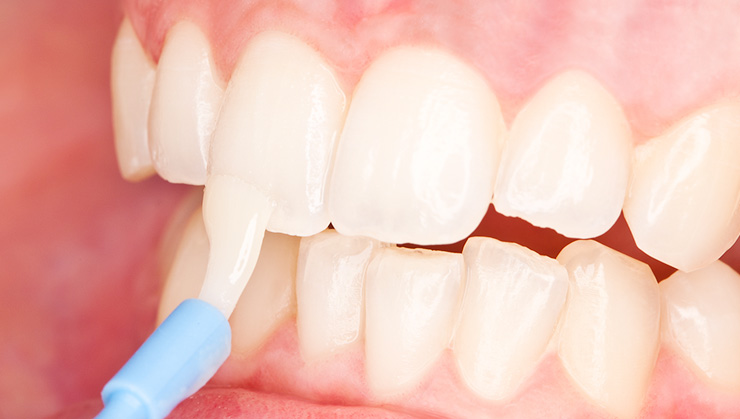
Fluoride Varnish
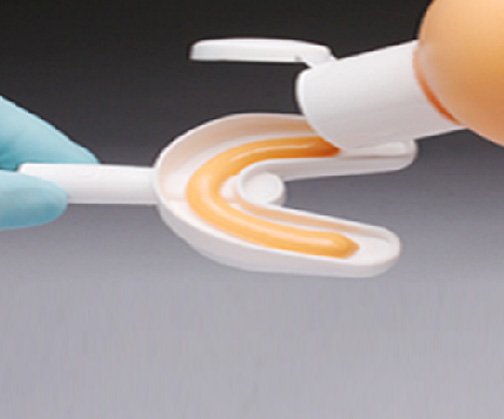
Fluoride Gen in a Tray
How We Do It
At Sri Sai Kirupa Dental Clinic, we provide topical fluoride applications to help strengthen tooth enamel, resist tooth decay, and promote re-mineralization of tooth areas affected by early decay. Your dentist may also prescribe fluoride supplements in liquid or tablet form.
More about Fluoride Therapy
Where is Fluoride available?
- Naturally: Fluoride is present in foods and water and gets deposited on teeth when we consume them.
- Artificially (Topical Fluoride): Fluoride can be artificially applied to the teeth in two ways:
- In a lightly concentrated form using fluoridated toothpaste and mouth rinse as a home remedy
- In a concentrated form as fluoride treatments where your dentist applies it as a varnish, foam, or gel. Varnishes are directly painted on the teeth; foams are placed in trays that are inserted into the mouth for the teeth to “soak in” for 1-4 minutes; gels are applied either way.
When Is Fluoride Intake Most Critical?
Although both adults and children benefit from fluoride, it is especially important for infants and children below 16 years to be exposed to fluoride as this is when the primary and permanent teeth are formed.
Are there any risks?
Too much of a good thing can do more harm than good. Excessive ingestion of fluoride is one cause of dental fluorosis (a developmental defect of the enamel) during the period of enamel formation between birth and 6 years of age. Hence, it is important for you to consult with your dentist to ensure the adequacy of fluoride use, especially for children below age six.
Need a Dentist? Why wait? Get on Appointment Today!
At Sri Sai Kirupa Dental Clinic we provide you a with a positive, anxiety-free, and attentive dental care experience.
